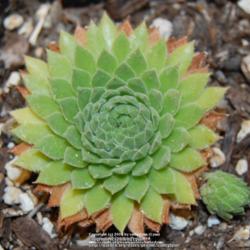I knew from my experimentation with propagation techniques that semps can come back from the roots. The miracle of the story, IMHO, is that the deer did not pull the plants out by the roots when eating them.
I doubt that many people know that they (semps) can regenerate from the roots, as most people think the only way to propagate is from offsets or seed. Actually the plants will grow again from cuttings, given good enough care. What does not usually happen, however, is regeneration from just a leaf. If the leaf has a piece of root or significant piece of stem, then there is a chance. I now routinely take cuttings of plants I want or need to propagate. It usually works well and sometimes the process of propagating from division (cutting) of the rosette can trigger a lot of offsets as the rosette is healing. Division by cutting can also save a blooming rosette if caught early. You must, of course, provide good growing conditions for this to work. During stressful times, such as high heat, this can be difficult.

